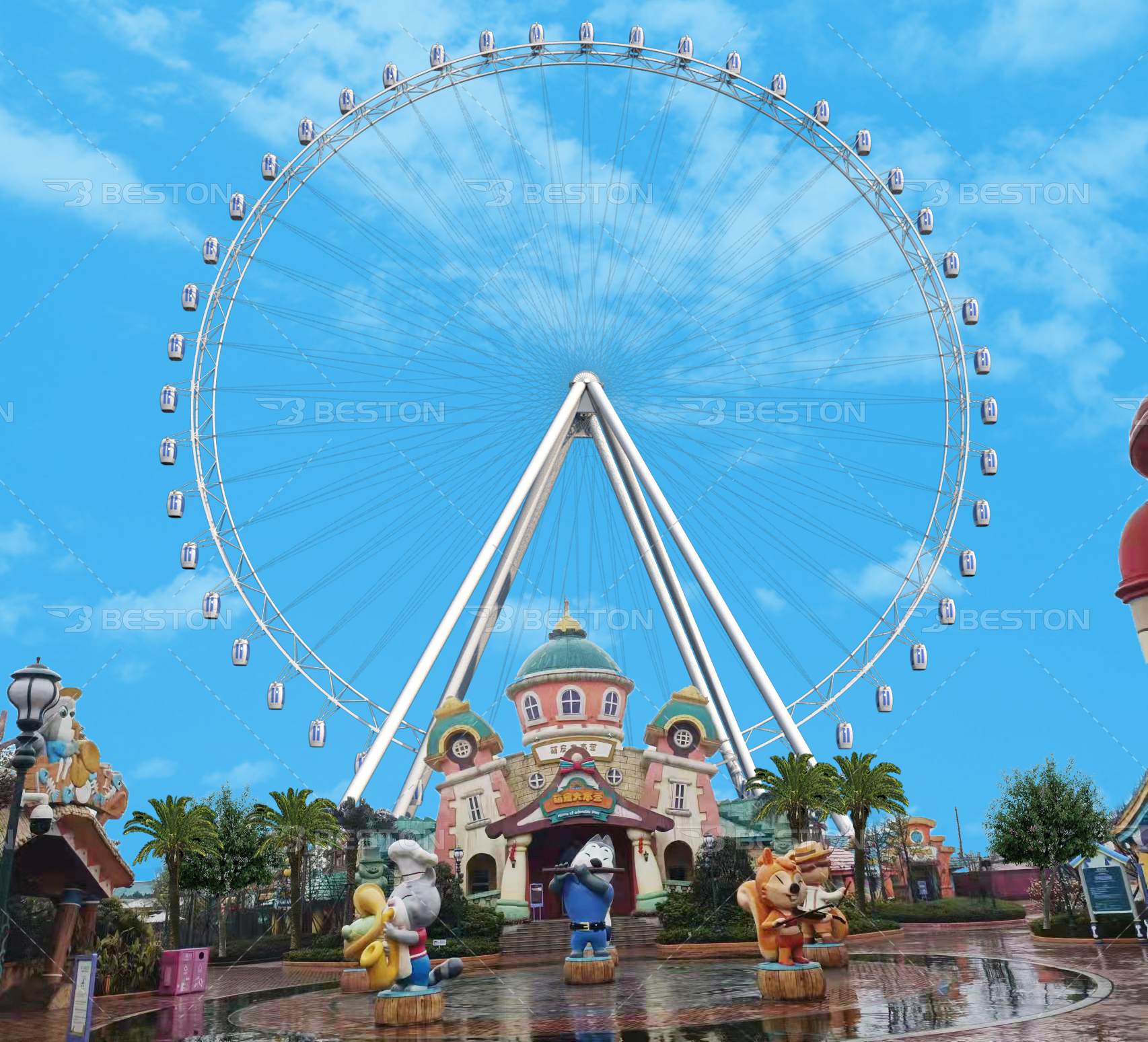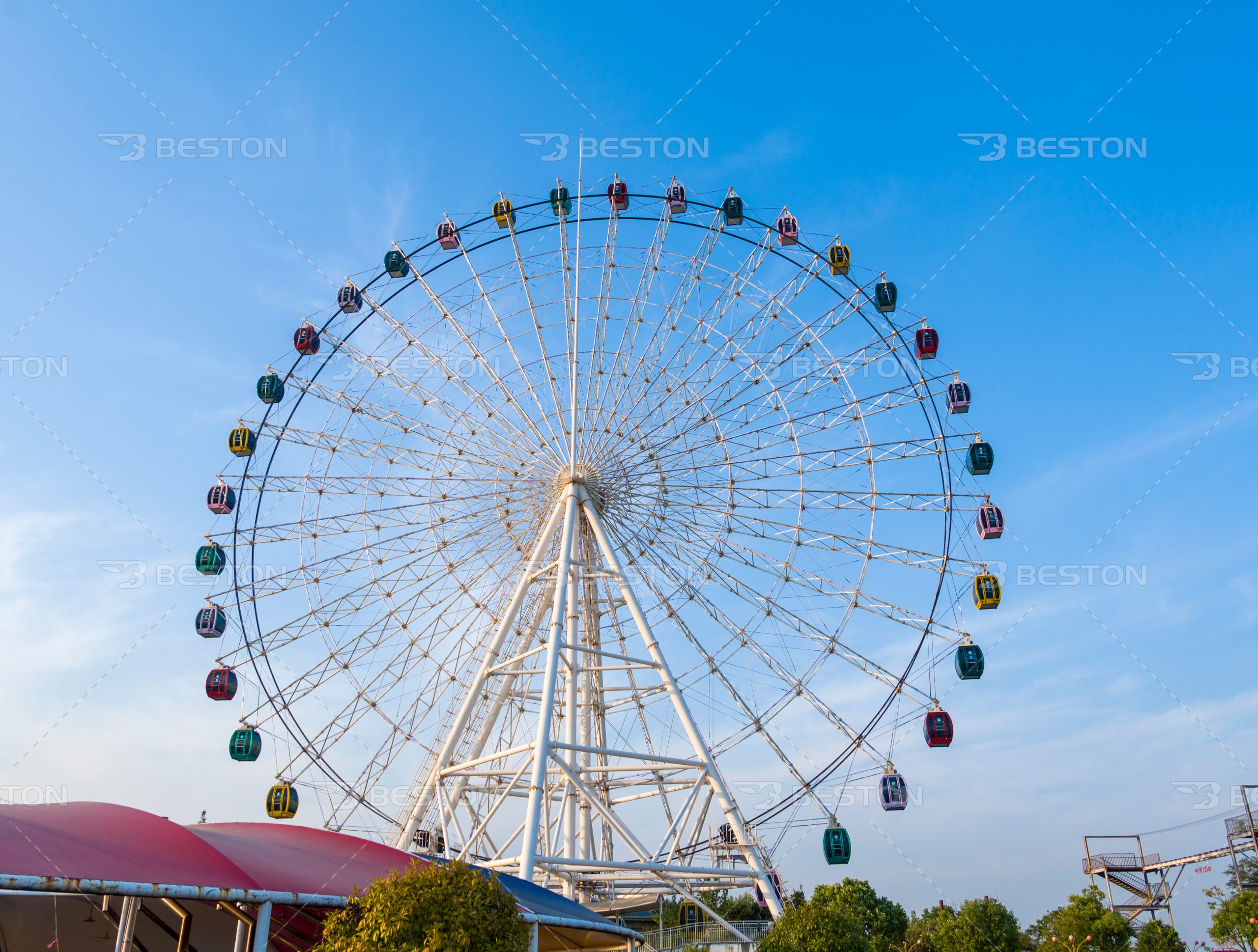Investing in amusement park rides, such as Ferris wheels and carousels, is an exciting yet complex decision. These attractions are known for their ability to draw large crowds and provide memorable experiences. However, their costs can vary greatly depending on factors like size, features, and installation. This article explores the costs associated with Ferris wheels and carousels, helping you understand the financial considerations when purchasing these popular amusement park rides for sale.
Factors Affecting Ferris Wheel Price
The ferris wheel price depends on several key factors, with size being one of the most significant. A large ferris wheel, for instance, is more expensive to build and maintain than smaller models. Its size requires more materials, a larger foundation, and more complex engineering. Additionally, large ferris wheels often feature advanced technology, such as high-tech safety systems, smooth ride controls, and LED lighting, all of which increase costs.
Beyond size, the ride’s customization also influences the price. A ferris wheel with custom cabins, panoramic windows, or unique lighting effects will cost more than a basic version. The location of the ferris wheel also impacts the price, as urban settings with high traffic or tourist appeal may incur higher installation and operational costs due to land use and regulation compliance.

Cost Ranges for Ferris Wheels
Small ferris wheels suitable for local parks may cost between $100,000 to $500,000. These models typically accommodate fewer passengers and are easier to install. On the other hand, a large ferris wheel designed for high-capacity urban locations or tourist areas can cost between $1 million to $20 million, depending on the features and complexity.

Understanding Carousel Costs
A carousel is another beloved ride, offering a more traditional and family-friendly experience. The cost of a carousel is influenced by the number of seats, the design of the ride, and the level of customization. A basic carousel with standard seats or animals will be more affordable than one with elaborate artwork, sound systems, or themed elements.
Carousels also vary in size. Smaller carousels designed for children’s parks or local fairs generally cost between $100,000 to $250,000. Larger, more intricate designs, especially those for theme parks or major attractions, can exceed $500,000, especially if the design includes custom artwork, premium materials, or advanced technology. So, how much does a carousel cost? It depends on the complexity of the design and the intended use, but the price range can vary significantly based on these factors.
Customization and Features
The cost of a carousel can also be driven up by custom features. These might include hand-painted figures, unique music systems, or themed elements that create a more immersive experience for riders. These add-ons require specialized craftsmanship and materials, which can substantially increase the total investment.
Comparing Ferris Wheel and Carousel Costs
When comparing the cost of amusement park rides for sale, Ferris wheels and carousels are both popular but come with different price points. Ferris wheels, particularly large ones, tend to be more expensive due to the complexity of the structure, the size, and the additional technological features. A ferris wheel price is often higher than a carousel, especially for rides with advanced safety systems or panoramic features.
Carousels are generally less expensive and offer more flexibility in terms of design and installation. Smaller carousels for community parks are relatively affordable, while larger ones for amusement parks may cost more, depending on customization. However, carousels typically don’t require as much space or technical expertise for installation and maintenance compared to a ferris wheel.
Key Costs to Consider
Installation and Site Preparation
The location where the ride will be installed plays a significant role in the overall cost. Installing a large ferris wheel in a crowded urban area may require additional groundwork, permits, and more extensive safety measures. In contrast, a carousel can often be placed in smaller spaces, making it more versatile and easier to install at various sites.
Maintenance and Operations
Both ferris wheels and carousels require regular maintenance to ensure safe operations. Ferris wheels, being more complex rides, may incur higher long-term maintenance costs due to their mechanical systems and moving parts. Carousels, while still requiring regular upkeep, are generally simpler and less costly to maintain.
Additionally, operating a ferris wheel can involve higher labor costs, as they often need specialized technicians for daily operations. Carousels, on the other hand, typically require fewer personnel to manage and operate.
Safety and Technology
Modern Ferris wheels often come with advanced safety features such as automated braking systems, ride monitoring software, and high-tech cabins. These upgrades ensure a smooth and safe experience but add to the initial cost. Similarly, high-end carousels may include sound and lighting systems, but these costs tend to be lower than those of a large ferris wheel.
Financing Amusement Park Rides
Securing financing for amusement park rides for sale can be challenging, particularly for large ferris wheels. Investors can explore various funding options, including loans, partnerships with local authorities, or private investors. Some amusement parks may also qualify for government subsidies or grants, especially if the project contributes to tourism or local development.
For carousels, financing is typically more accessible, as they are smaller and less costly to produce. In some cases, smaller carousels can be financed through revenue-sharing agreements, where the investor pays over time based on the ride’s earnings.
Conclusion
The cost of amusement park rides for sale, such as Ferris wheels and carousels, varies significantly based on size, design, and location. While a ferris wheel price can range from hundreds of thousands to millions of dollars, a carousel generally offers a more affordable investment with customizable options for different budgets. When choosing between the two, it’s important to consider not only the initial cost but also ongoing maintenance, installation requirements, and the target audience. Both attractions provide unique benefits, and the decision ultimately depends on the specific needs and goals of the amusement park or entertainment venue.